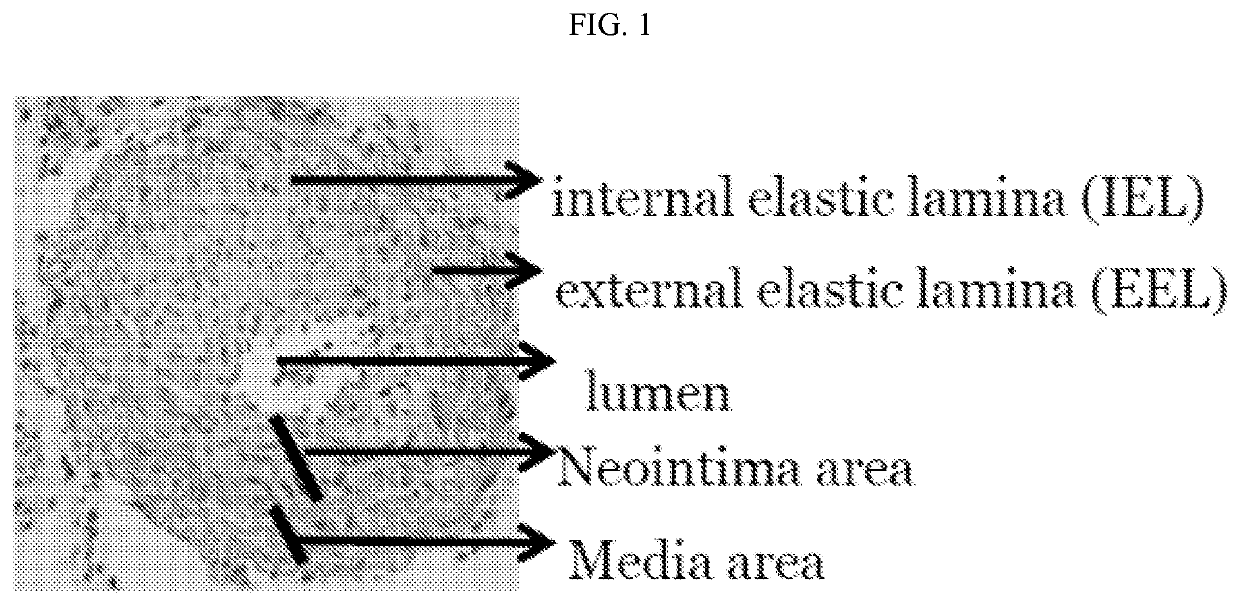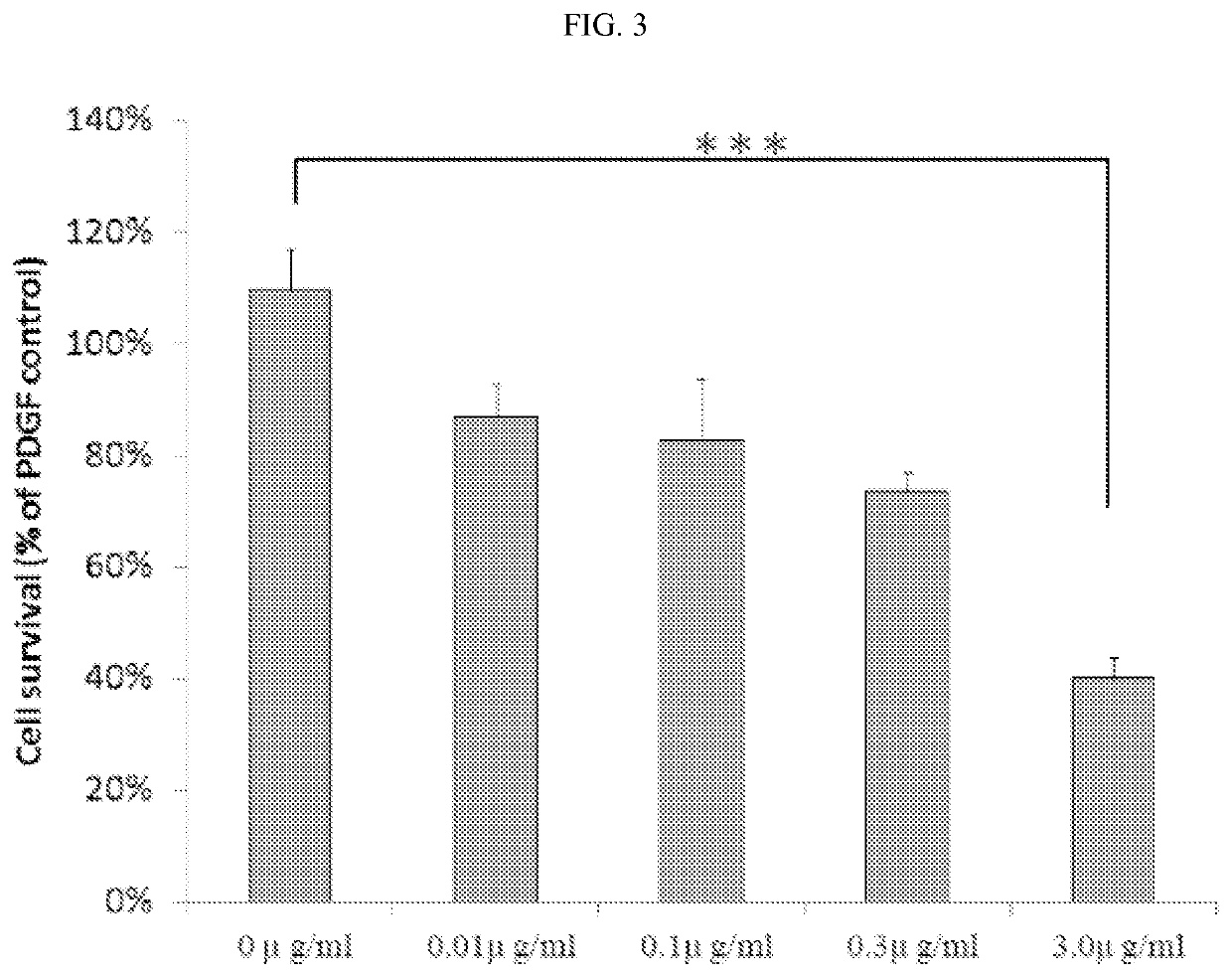Methods and compositions for treating arteriosclerotic vascular diseases
a technology for arteriosclerotic vascular diseases and compositions, applied in drug compositions, dispersed delivery, metabolic disorders, etc., can solve the problems of weak extracellular matrix separating the lesion from the arterial lumen (also known as the fibrous cap) and prone to ruptur
- Summary
- Abstract
- Description
- Claims
- Application Information
AI Technical Summary
Benefits of technology
Problems solved by technology
Method used
Image
Examples
example 1
Preparation of the Exemplary Cyclohexenone Compounds
[0252]One hundred grams of mycelia, fruiting bodies or mixture of both from Antrodia camphorata were placed into a flask. A proper amount of water and alcohol (70-100% alcohol solution) was added into the flask and were stirred at 20-25° C. for at least 1 hour. The solution was filtered through a filter and 0.45 μm membrane and the filtrate was collected as the extract.
[0253]The filtrate of Antrodia camphorata was subjected to High Performance Liquid chromatography (HPLC) analysis. The separation was performed on a RP18 column, the mobile phase consisted of methanol (A) and 0.3% acetic acid (B), with the gradient conditions of 0-10 min in 95%-20% B, 10-20 min in 20%-10% B, 20-35 min in 10%-10% B, 35-40 min in 10%-95% B, at the flow rate of 1 ml / min. The column effluent was monitored with a UV-visible detector.
[0254]The fractions collected at 21.2 to 21.4 min were collected and concentrated to yield compound 5, a product of pale yel...
example 2
Rat Smooth Muscle Cell Model
Materials and Methods
[0264]A7r5 cell line (rat aortic smooth muscle cells) was purchased from Bioresource Collection and Research Center, (Taiwan).
[0265]
Cell lineA7r5 (BCRC 60082)SpeciesRattus norvegicusMorphologyFibroblastDescriptionMuscle; smooth; thoracic aortaGrowth CharacterAdherentCell culturesDMEM with 4 mM L-glutamine, 1.5 g / Lsodium bicarbonate, 4.5 g / Lglucouse + 10% FBSCell Culture37° C. 5% CO2Conditions
2.1 MTT Assay
[0266]MTT assay is commonly used to determine cell proliferation, percent of viable cells, and cytotoxicity. MTT (3[4,5-dimethylthiazol-2-yl]2,5-diphenyltetrazolium bromide) is a yellow dye, which can be absorbed by the living cells and be reduced to purplish blue formazan crystals by succinate tetrazolium reductase in mitochondria. Formazan formation can therefore be used to assess and determine the survival rate of cells. A solubilization solution (usually either dimethyl sulfoxide, an acidified ethanol solution, or a solution of th...
example 3
The Rat Atherosclerosis Model
3.1 Carotid Artery Ligation Model
[0278]Arteries are vessels that carry blood away from the heart. The carotid arteries are blood vessels that supply blood to the head, neck and brain. One carotid artery is position on each side of the neck. The right common carotid artery branches from the brachiocephalic artery and extends up the right side of the neck. The left common carotid artery branches from the aorta and extends up the left side of the neck. Each carotid artery branches into internal and external vessels near the top of the thyroid. Following the study by Hsing-Chun Chung (Dissertation, 2008, Southern Taiwan University), the carotid artery ligation was conducted on the left common carotid artery in mice to induce neointimal thickening.
[0279]This experiment used 8-week-old C57BL / 6J male mice having about 25 g of body weight, which were purchased from National Laboratory Animal Center. These mice were maintained at the Laboratory Animal center of N...
PUM
| Property | Measurement | Unit |
|---|---|---|
| volume | aaaaa | aaaaa |
| volume | aaaaa | aaaaa |
| volume | aaaaa | aaaaa |
Abstract
Description
Claims
Application Information
 Login to View More
Login to View More - R&D
- Intellectual Property
- Life Sciences
- Materials
- Tech Scout
- Unparalleled Data Quality
- Higher Quality Content
- 60% Fewer Hallucinations
Browse by: Latest US Patents, China's latest patents, Technical Efficacy Thesaurus, Application Domain, Technology Topic, Popular Technical Reports.
© 2025 PatSnap. All rights reserved.Legal|Privacy policy|Modern Slavery Act Transparency Statement|Sitemap|About US| Contact US: help@patsnap.com



